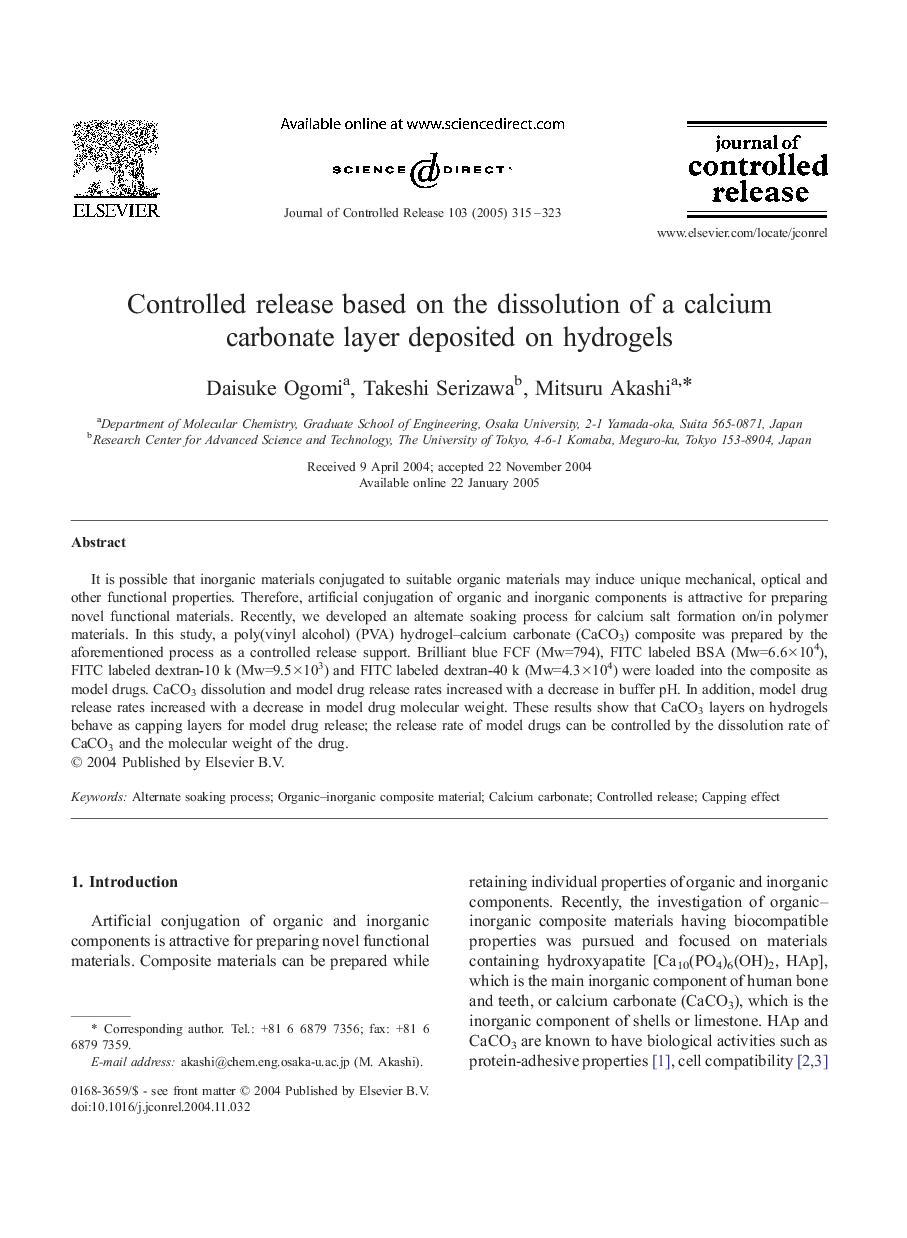| Article ID | Journal | Published Year | Pages | File Type |
|---|---|---|---|---|
| 10613321 | Journal of Controlled Release | 2005 | 9 Pages |
Abstract
It is possible that inorganic materials conjugated to suitable organic materials may induce unique mechanical, optical and other functional properties. Therefore, artificial conjugation of organic and inorganic components is attractive for preparing novel functional materials. Recently, we developed an alternate soaking process for calcium salt formation on/in polymer materials. In this study, a poly(vinyl alcohol) (PVA) hydrogel-calcium carbonate (CaCO3) composite was prepared by the aforementioned process as a controlled release support. Brilliant blue FCF (Mw=794), FITC labeled BSA (Mw=6.6Ã104), FITC labeled dextran-10 k (Mw=9.5Ã103) and FITC labeled dextran-40 k (Mw=4.3Ã104) were loaded into the composite as model drugs. CaCO3 dissolution and model drug release rates increased with a decrease in buffer pH. In addition, model drug release rates increased with a decrease in model drug molecular weight. These results show that CaCO3 layers on hydrogels behave as capping layers for model drug release; the release rate of model drugs can be controlled by the dissolution rate of CaCO3 and the molecular weight of the drug.
Keywords
Related Topics
Physical Sciences and Engineering
Materials Science
Biomaterials
Authors
Daisuke Ogomi, Takeshi Serizawa, Mitsuru Akashi,
